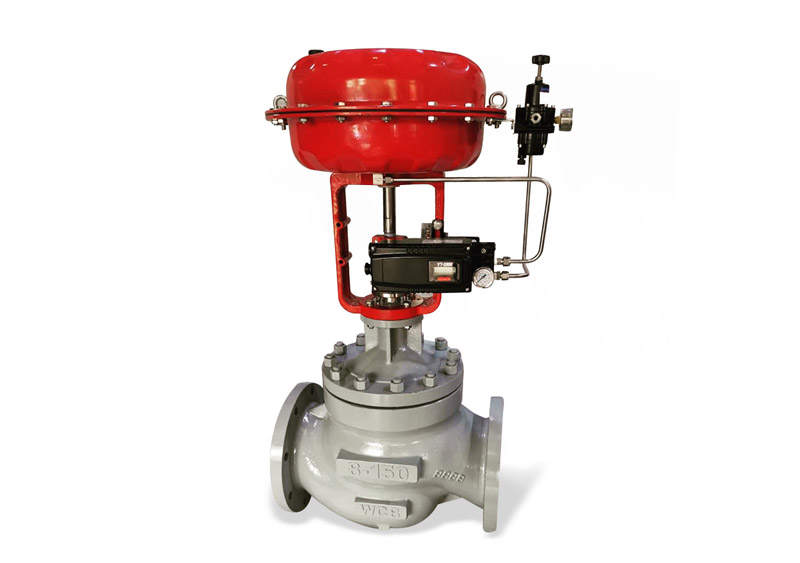Effective Control Valves: Secret Components for Reliable System Administration
Effective Control Valves: Secret Components for Reliable System Administration
Blog Article

Maximize Power Cost Savings and Convenience With Advanced Structure Automation Controls
In the world of modern-day style and center administration, the integration of advanced building automation controls stands as a critical innovation. The convergence of modern technology and sustainability has birthed a new era where power effectiveness, convenience optimization, and operational streamlining are no more obtainable truths however distant ambitions. By taking advantage of the power of automation, structures can adapt, respond, and develop in manner ins which were when inconceivable. The possibility for significant power cost savings and boosted comfort is not simply an opportunity yet an assurance waiting to be fulfilled. This standard shift in building monitoring holds the key to opening a world where environmental conscientiousness and resident health sympathetically exist side-by-side within the wall surfaces of our frameworks.
Power Performance Benefits
Power efficiency advantages can substantially minimize energy usage and operational expenses in structures. Energy-efficient systems, such as advanced structure automation controls, can maximize the use of resources like lights, heating, and cooling, leading to reduced energy costs over time.
In addition, improved power effectiveness can prolong the life expectancy of structure tools and systems. By operating much more effectively, a/c systems, light, and various other building elements experience less damage, causing decreased maintenance and substitute expenses. Furthermore, energy-efficient structures frequently regulate higher home worths and rental rates, giving long-lasting monetary advantages to owners.
Moreover, power efficiency can enhance occupant convenience and performance. Appropriately controlled interior environments with optimum lights and thermal problems produce a more pleasurable and favorable work space, causing enhanced staff member satisfaction and performance. Generally, the power effectiveness advantages linked with advanced building automation controls are complex, including price financial savings, ecological stewardship, and passenger well-being.
Enhanced Convenience Control
Enhancing convenience control in structure atmospheres needs a sophisticated combination of innovative automation systems for optimum occupant health. By using advanced structure automation controls, facilities can tailor the indoor environment to fulfill the particular needs and choices of occupants. control valves.
By integrating these innovative controls, buildings can not just enhance comfort yet additionally improve energy effectiveness by optimizing system procedures based on actual occupancy and use patterns. Eventually, prioritizing owner convenience through advanced automation systems leads to a more delightful and much healthier indoor atmosphere.
Functional Efficiency Improvements

In addition, the application of real-time tracking and analytics tools enables building operators to recognize power ineffectiveness and operational abnormalities without delay. By continuously click over here monitoring energy usage patterns and system performance metrics, modifications can be made in real-time to enhance power intake and guarantee peak functional performance. control valves. In addition, integrating need action approaches right into structure automation controls can further enhance operational performance by dynamically changing energy use based upon grid problems and rates signals
Indoor Environment Optimization
Efficient indoor climate optimization is a basic aspect of building automation controls, guaranteeing occupants' comfort and health while making best use of power cost savings. By making use of innovative sensing units and controls, building automation systems can continuously monitor and change temperature level, moisture levels, air top quality, and air flow to produce an optimum indoor setting. Preserving comfy and regular problems not just boosts occupant satisfaction however additionally increases productivity and total wellness.
Interior climate optimization additionally plays a critical function in energy efficiency. By fine-tuning air flow, air conditioning, and home heating systems based upon real-time information and occupancy patterns, developing automation controls can dramatically reduce power consumption - control valves. For example, applying approaches such as demand-controlled ventilation and thermal zoning can help reduce energy waste while making certain that each area of the building receives the needed conditioning.

Lasting Atmosphere Creation
Structure automation regulates not only maximize interior climate problems for power efficiency and resident convenience yet also lay the foundation for developing a sustainable atmosphere through strategic administration of sources and systems. By integrating advanced structure automation modern technologies, such as sensing units, actuators, and intelligent software program, centers can readjust and check power use in real-time to reduce waste and minimize their carbon footprint. These systems make it possible for predictive upkeep, recognizing potential problems prior to they escalate and optimizing equipment performance to enhance durability and efficiency.
Moreover, sustainable environment production prolongs beyond energy administration to encompass water preservation, waste reduction, and indoor air high quality renovation. Structure automation controls can additional reading control water use, find leaks, and make certain correct garbage disposal methods, adding to total sustainability efforts. Additionally, by managing and monitoring ventilation and purification systems, these technologies boost owner health and productivity while lowering energy consumption connected with cooling and heating operations.
Final Thought
Finally, progressed building automation controls offer substantial advantages in terms of energy cost savings, convenience control, functional performance, indoor climate optimization, and creating a lasting setting. By executing these controls, structures can accomplish optimum performance while lowering energy consumption and enhancing passenger comfort. It is obvious that making use of advanced automation innovation is essential in enhancing building efficiency and creating a more lasting future.
Power efficiency advantages can significantly lower power intake and operational prices in structures. On the whole, the energy efficiency advantages associated with sophisticated building automation controls are complex, incorporating price financial savings, environmental stewardship, and passenger wellness.
Additionally, including demand reaction methods right into structure automation controls can even more boost functional performance by dynamically adjusting energy usage based on grid problems and rates signals.
Structure automation regulates not just optimize indoor environment problems for energy performance and passenger convenience yet additionally lay the foundation for developing browse around this site a sustainable atmosphere through critical administration of sources and systems.In final thought, progressed building automation controls offer considerable benefits in terms of energy cost savings, convenience control, functional efficiency, indoor environment optimization, and producing a lasting environment.
Report this page